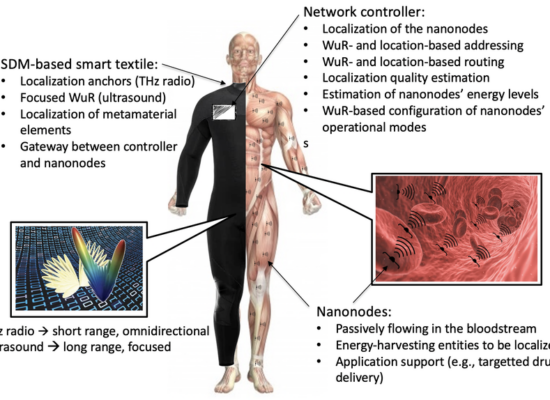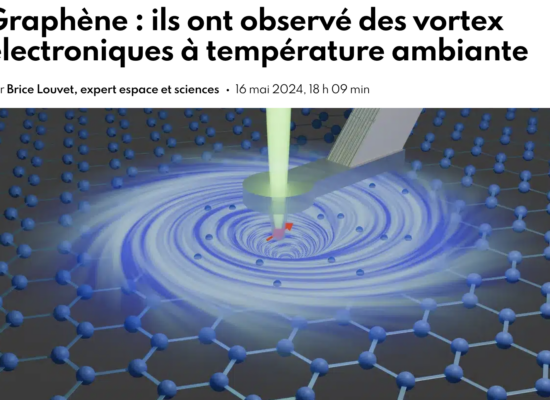A dear friend of mine told me about his recent adventures, in Spain, of cataract removal by ultrasonic fragmentation of the cataract under local anesthesia and without scarring. The “phako-emulsification technique” is a surgical operation which has become commonplace and which lasts only 15 minutes… if everything goes well. And for his second eye, it went very badly for my friend… because of very bad manipulations of the operator by dragging the fall of the nucleus (an incidence of 1,84% [60]).
I will have the opportunity, another time, to explain the therapies that my friend applied, on a daily basis, in order to compensate for the fall of the nucleus… without another surgical operation called vitrectomy.
This incident made me wonder about the potential presence of graphene in various types of eye implants … in addition to the proven presence in saline solutions – which are, also, used in corneal surgery. And I went to investigate.
If you are not very alarmed after reading this article, you may not have the right glasses on.
In conclusion? Graphene is indeed present in eye implants – as it is in most areas of everyday life… including most medical procedures. And I will present, below, a few studies to prove it.
May I repeat myself? Graphene is ominously present… in Life, in Death. What will you do? See this study, for example, from January 2023. “Applications of Graphene in Five Senses, Nervous System, and Artificial Muscles”. [93]
«Graphene remains of great interest in biomedical applications because of biocompatibility. Diseases relating to human senses interfere with life satisfaction and happiness. Therefore, the restoration by artificial organs or sensory devices may bring a bright future by the recovery of senses in patients. In this review, we update the most recent progress in graphene based sensors for mimicking human senses such as artificial retina for image sensors, artificial eardrums, gas sensors, chemical sensors, and tactile sensors. The brain-like processors are discussed based on conventional transistors as well as memristor related neuromorphic computing. The brain–machine interface is introduced for providing a single pathway. Besides, the artificial muscles based on graphene are summarized in the means of actuators in order to react to the physical world. Future opportunities remain for elevating the performances of human-like sensors and their clinical applications».
May I recommend, once again, the reading all of Mik Andersen’s essays? [86] [87] [88]
First question. Without mentioning the circulatory, and irradiating, impact of graphene in the human body, what could be the consequences of its presence in human eyes? More particularly, when one is attentive to the dazzling developments using graphene in photonics, electronics and opto-electronics.
See the January 2023 study in Nature entitled “Graphene oxide for photonics, electronics and optoelectronics.” [67]
As a second question. Isn’t it disturbing to discover that the same researchers who are working on artificial retinas, made in graphene, are also working on “medical” tattoos? Especially when I remember, very well, that the first vaccine tattoos were launched by the Bill Gates Foundation in Africa. What a coincidence!
«Moving ahead, Lu is exploring ways to integrate this technology [of graphene] into mechanically and optically imperceptible electronic tattoos that are laminated on the skin surface to gather real-time health information. Lu says that the team plans to add transistors to these transparent e-tattoos to help amplify signals from the brain or the heart so they can be more easily monitored and treated. These ultrathin sensors and electrodes can also be implanted on the surface of the heart to detect arrhythmias. Lu says doctors could potentially program them to act like tiny pacemakers, sending electrical impulses through the heart to correct the problem.» [69]
As a third question. Is it not excessively disturbing to discover the “medical” presence of graphene in the eyes – which are very close to the brain… and in direct relation – when one knows the intensity of the work on graphene in relation to the brain and neuro-modulations. Billions of euros of subsidies in Europe are going to such research. For example, with the European Graphene Flagship or with InBrain in Spain [79] – a pseudopod of the European Graphene Flagship. [89] Can you guess why?
See Mike Andersen’s very technical essay on this subject: “Graphene oxide and brain stimulation by EM electromagnetic waves capable of inferring in the human mind”. [97]
As a fourth question. Isn’t it excessively disturbing to discover that some studies do not hesitate to talk about the new smart lenses in terms of antennas, frequency bands, wireless networks, etc. Mama mia! The Pandemia!
See the particularly scary study: “Wearable smart sensor systems integrated on soft contact lenses for wireless ocular diagnostics”. [84]
I haven’t had time to scan the web for patents on the use of ocular graphene. Here, however, is one published in 2020: “Dispositif médical comprenant un revêtement en graphène”. US20210187161A1. [90] [91]
«The invention features a medical device comprising a substrate, and a graphene coating, wherein the graphene coating is substantially transparent and wherein the graphene coating has a thickness less than about 20 μm. In preferred aspects, the present invention provides a graphene coating and a medical device comprising the graphene coating.
In one preferred aspect, the present invention provides a medical device that comprises a substrate and a graphene coating. The graphene coating is disposed on at least one surface of the substrate. In particular, the graphene coating is substantially transparent and has a thickness less than about 20 μm. Preferably, the graphene coating may have a thickness less than about 20 μm, less than about 10 μm, less than about 5 μm, less than about 1 μm, less than about 500 nm, less than about 250 nm, less than about 125 nm, less than about 100 nm, or less than about 10 nm.
In certain embodiments, the graphene coating may be formed in a film. In certain embodiments, the graphene coating may comprise a single layer or multiple layers of graphene.
In certain embodiments, the medical device may be an ocular device. The graphene coating of the ocular device may have a light transmittance greater than about 80%, greater than about 85%, or greater than about 90%.» [90] [91]
Here are some studies on the preparation of graphene-based ocular implants – and their potential toxicity: contact lenses, artificial lenses, retinal prostheses.
Because of the presence of graphene in contact lenses, they are called “smart lenses”. Because they could be interactive? And with whom?
The presence of graphene in contact lenses allegedly allows the body to better resist the formation of cataracts. [80]
They are promoted, thus, in contact lenses, as protection against electromagnetic waves and, even, against dehydration. [82]
“Graphene Oxide–Based Nanomaterials: An Insight into Retinal Prosthesis”. April 2020. [65] «Retinal prosthesis has recently emerged as a treatment strategy for retinopathies, providing excellent assistance in the treatment of age-related macular degeneration (AMD) and retinitis pigmentosa. The potential application of graphene oxide , a highly biocompatible nanomaterial with superior physicochemical properties, in the fabrication of electrodes for retinal prosthesis, is reviewed in this article. This review integrates insights from biological medicine and nanotechnology, with electronic and electrical engineering technological breakthroughs, and aims to highlight innovative objectives in developing biomedical applications of retinal prosthesis. »
Studies on the potential toxicity of graphene in the eyes are not new. For example: “Can graphene oxide cause damage to eyesight?” [66]
“Novel Graphene Electrode for Retinal Implants: An in vivo Biocompatibility Study”. March 2021. [70] «This study focused on chemical vapor deposition graphene material and its potential use in active electrodes. The study demonstrates that the presences of graphene induces a lesser inflammation quantified by microglial labeling compared to biocompatible polymers. Graphene can therefore be further investigated for use in electrodes for retinal prostheses or more generally any electronic device for recording and stimulation of the central nervous system. Further studies will assess more developed graphene structures on chronic devices to compare biocompatibility, safety and stimulation capabilities between classic materials and graphene-based electrodes. »
“A new generation of artificial retinas based on 2-D materials”. August 2018. [69]«The researchers used 2-D materials, including graphene and molybdenum disulfide, as well as thin layers of gold, alumina and silicon nitrate to create a flexible, high-density and curved sensor array. The device, which resembles the surface of a flattened soccer ball or icosahedron, conforms to the size and shape of a natural retina without mechanically disturbing it.
In laboratory and animal studies, photodetectors on the device readily absorbed light and passed it through a soft external circuit board. The circuit board housed all of the electronics needed to digitally process light, stimulate the retina and acquire signals from the visual cortex. Based on these studies, the researchers determined that this prototype artificial retina is biocompatible and successfully mimics the structural features of the human eye. They say it could be an important step in the quest to develop the next generation of soft bio-electronic retinal prostheses. »
According to the two researchers (from Texas and South Korea): «We have invented a cost- and time-effective “wet transfer, dry patterning” process for the freeform manufacture of graphene e-tattoos (GETs). Our GET has a total thickness of less than 500 nm, an optical transparency of ~85%, and a stretchability of more than 40%. Tensile fracture of PMMA-supported graphene has been experimentally investigated and different stages of fracture have been identified. GET can be directly laminated on human skin exactly like a temporary transfer tattoo and can fully conform to the microscopic morphology of the skin surface via just van der Waals forces.
In addition to noninvasive e-tattoos, we have engineered human eye-inspired soft implantable optoelectronic device using atomically thin MoS2-graphene heterostructure and strain-releasing, retina conformable designs. The hemispherically curved image sensor array exhibits infrared blindness and successfully acquires pixelated optical signals. We propose the ultrathin hemispherically curved image sensor array as a promising imaging element in the soft retinal implant with minimum mechanical loading to the retina. Optical signals obtained by this curved image array can be converted to electrical stimulations applied to optic nerves to restore visualization.»
“Soft transparent graphene contact lens electrodes for conformal full-cornea recording of electroretinogram”. August 2018. [92] « Recently, however, scientists at Peking University, Beijing, have demonstrated soft, transparent GRAphene Contact lens Electrodes (GRACEs) for conformal full-cornea electroretinogram signal recording in rabbits and cynomolgus monkeys, showing that their soft graphene contact lens electrodes address these limitations.» [81]
According to Dr. Duan: « Graphene obtained from conventional growth method is a flat film, and wrinkles inevitably form after transferring the flat graphene film to the curved surface. To make a graphene contact lens electrode with high electrical conductivity and optical uniformity across the electrode, it’s important to directly use a curved graphene film with uniform thickness» [81]
“Smart Contact Lenses with Graphene Coating for Electromagnetic Interference Shielding and Dehydration Protection”. 2017. [83]
“A Look at Graphene-Coated Smart Contact Lenses”. April 2020. [80] «The use of graphene in smart contact lenses first started with implementing graphene sensors into contact lenses. As it is very thin, it has a very active surface area that is ideal for sensing (alongside its electrical conductivity for active detection). Such sensors have been implemented into contact lenses to detect infrared light waves, which, in turn, could enable the user to see better in the dark, acting as night-vision contact lenses.
Research over the last few years has investigated other areas in which graphene could be used within contact lenses, namely as a conductive coating. Among the many different properties it possesses, graphene has electromagnetic interference shielding (EMI) properties, which help to protect the eyes against electromagnetic waves, reducing the chance of cataracts occurring. Given graphene’s flexibility and high tensile strength, it can be implemented on complex and curved surfaces, such as those found on the eyeball, and the contact lenses that sit above the eye.
As well as to protect against electromagnetic waves, these contact lenses have also been used to prevent the dehydration that contact lenses often cause by keeping in moisture from tear fluid.»
“Smart Contact Lenses with Graphene Coating for Electromagnetic Interference Shielding and Dehydration Protection”. 2017. [82]
“Wearable smart sensor systems integrated on soft contact lenses for wireless ocular diagnostics”. [84]
«Schematic image of the all-in-one multifunctional sensor composed of a field-effect sensor and antenna on a soft contact lens is given in Fig. 1a. Materials for biosensors operating on soft contact lenses require transparency and stretchability, as well as reliability upon repeated bending and stretching. Candidates satisfying these requirements include graphene, carbon nanotubes, metal nanowires, metal mesh structures, conducting polymers, and their hybrid structures In particular, we previously reported that the graphene-silver nanowire (AgNW) hybrid structure has enhanced electrical and mechanical properties without sacrificing transparency, and is thus suitable as stretchable, transparent electrodes. »
This study is particularly scary because it talks about spiral antennas and frequency bands, wireless networks, etc.
“Smart Reinvention of the Contact Lens with Graphene”. 2017. [85]




